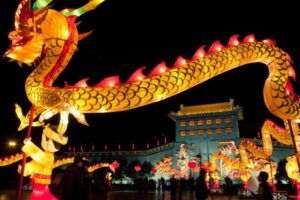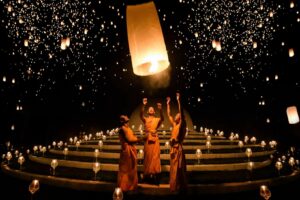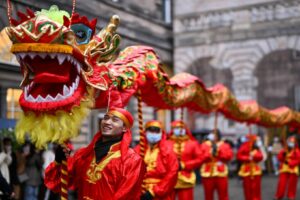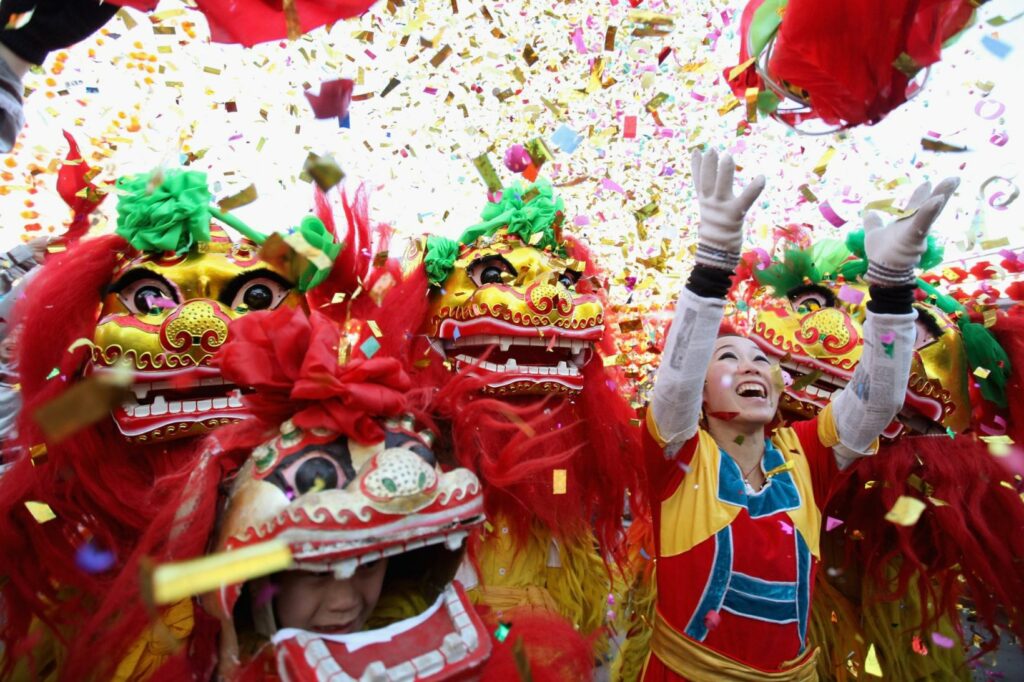Asia, a continent rich in cultural diversity and history, hosts a vibrant tapestry of celebrations and festivals that captivate the world. These events, steeped in tradition and often marked by colorful displays, offer a glimpse into the unique customs and beliefs of various Asian communities. From the lantern-lit skies of China’s Mid-Autumn Festival to the exuberant water fights of Thailand’s Songkran, each celebration tells a story of heritage and unity.
These festivals not only highlight the cultural richness of Asia but also foster a sense of community and shared joy among those who participate. Whether it’s the rhythmic beats of India’s Diwali or the intricate dances of Japan’s Obon, these celebrations invite people from all walks of life to join in the festivities. As interest in global cultures grows, understanding and appreciating these Asian festivals becomes more important than ever, offering insights into the traditions that shape this dynamic continent.
Asian Celebrations and Festivals List
 Asian celebrations hold deep cultural importance and foster social cohesion. Festivals like Diwali in India represent triumph over darkness, emphasizing spiritual renewal and joy. This significance extends beyond individual practices, fostering unity within communities. Celebrants often engage in collective rituals, strengthening bonds and promoting solidarity.
Asian celebrations hold deep cultural importance and foster social cohesion. Festivals like Diwali in India represent triumph over darkness, emphasizing spiritual renewal and joy. This significance extends beyond individual practices, fostering unity within communities. Celebrants often engage in collective rituals, strengthening bonds and promoting solidarity.
These events mark vital transitions in the yearly cycle. The Lunar New Year, observed across East Asia, signifies renewal and hope. People prepare meticulously, believing that actions during this time can influence their fortunes. Celebrations thus serve as a means to honor past heritage while embracing future prosperity.
Cultural expressions during festivals include distinct arts and traditions. During Japan’s Hanami, millions gather under cherry blossoms, embracing nature’s beauty and renewal. Traditional music, dance, and crafts during these occasions offer profound cultural insights, preserving and celebrating heritage.
Popular Asian New Year Festivals
Asian New Year festivals, with diverse and rich celebrations, mark the beginning of a new year across various cultures in Asia. These festivities often involve traditional rituals, food, and family gatherings.
Chinese New Year
 Chinese New Year, also known as Spring Festival, is one of Asia’s most significant holidays. It’s celebrated in January or February, aligning with the lunar calendar. Preparations include cleaning homes to ward off bad luck, decorating with red symbols for prosperity, and preparing traditional foods like dumplings and rice cakes. Celebrations last for 15 days, concluding with the Lantern Festival. Fireworks and dragon dances are popular activities that symbolize luck and prosperity.
Chinese New Year, also known as Spring Festival, is one of Asia’s most significant holidays. It’s celebrated in January or February, aligning with the lunar calendar. Preparations include cleaning homes to ward off bad luck, decorating with red symbols for prosperity, and preparing traditional foods like dumplings and rice cakes. Celebrations last for 15 days, concluding with the Lantern Festival. Fireworks and dragon dances are popular activities that symbolize luck and prosperity.
Japanese New Year’s Day
Japanese New Year’s Day, or Shogatsu, marks an important family occasion in Japan. Celebrations start on January 1 and last for three days. Families visit shrines and temples for prayers and blessings. Decorative items like kadomatsu and shimenawa adorn homes to invite good fortune. Traditional foods such as osechi-ryori, which includes dishes like black beans and herring roe, are prepared and shared among family and friends.
Religious And Cultural Celebrations
Asian celebrations offer profound insights into the spiritual and cultural landscapes of the continent. These events often intersect religion and tradition, fostering community unity and cultural preservation.
Diwali
 Diwali, known as the Festival of Lights, is celebrated predominantly in India. It signifies the victory of light over darkness and good over evil. People light oil lamps and candles in their homes, exchange sweets, and perform prayers to Lakshmi, the goddess of wealth. Fireworks illuminate the sky, and community events strengthen social bonds. This festival holds cultural and spiritual importance across various regions.
Diwali, known as the Festival of Lights, is celebrated predominantly in India. It signifies the victory of light over darkness and good over evil. People light oil lamps and candles in their homes, exchange sweets, and perform prayers to Lakshmi, the goddess of wealth. Fireworks illuminate the sky, and community events strengthen social bonds. This festival holds cultural and spiritual importance across various regions.
Vesak
Vesak marks the birth, enlightenment, and death of Buddha, revered in many Buddhist countries. Observed in nations like Sri Lanka, Thailand, and Nepal, it’s central to Buddhist culture. Devotees visit temples, engage in meditation, and participate in charitable acts. The day often includes elaborate ceremonies, offerings to monks, and chanting of Buddhist scriptures. Vesak fosters reflection, compassion, and understanding of Buddhist teachings.
Families Enjoy Togetherness
 Asian celebrations and festivals offer a captivating glimpse into the continent’s cultural diversity and historical depth. These events not only celebrate traditions and beliefs but also strengthen community ties and foster a sense of unity. As global interest in cultural diversity grows, understanding these festivals becomes increasingly important. They serve as a bridge to connect people across different backgrounds, promoting appreciation and respect for Asia’s rich heritage. By participating in or learning about these celebrations, individuals can gain valuable insights into the traditions that shape the lives of millions, ensuring cultural continuity and shared joy across generations.
Asian celebrations and festivals offer a captivating glimpse into the continent’s cultural diversity and historical depth. These events not only celebrate traditions and beliefs but also strengthen community ties and foster a sense of unity. As global interest in cultural diversity grows, understanding these festivals becomes increasingly important. They serve as a bridge to connect people across different backgrounds, promoting appreciation and respect for Asia’s rich heritage. By participating in or learning about these celebrations, individuals can gain valuable insights into the traditions that shape the lives of millions, ensuring cultural continuity and shared joy across generations.

